The SARS-Cov-2 virus and the respiratory illness it causes, “Coronavirus Disease 2019” or COVID-19, is being actively monitored by the Centers for Disease Control and Prevention (CDC). As of Friday, March 6, there were more than 230 confirmed cases in the United States, and 14 confirmed deaths. The disease has now made its way to Kentucky, with four confirmed cases. If you haven’t taken steps to prepare your workforce, now is the time to do so.
Coronavirus and the Flu
Both the flu and the coronavirus are respiratory infections. Both present with nearly identical symptoms. And both can be deadly. There are two key differences at this point. First, the flu tends to be seasonal, and its unknown whether the same can be said for the coronavirus. Second, there is a vaccine for the flu, and no such vaccine yet exists for the coronavirus.
Coronavirus Prevention
Employers should be encouraging their employees to take multiple steps to prevent the spread of the coronavirus—and, indeed, any communicable disease—in the workplace, including the following:
- Employees should stay at home if they are sick;
- Employees should practice good personal hygiene, including washing their hands with soap and hot water for at least 20 seconds after every trip to the bathroom; before eating food; after blowing their nose, coughing, or sneezing; after touching garbage; and after shaking hands with others;
- Employees should cover their mouths with tissues whenever they sneeze or cough, and discard the tissues in the trash;
- Employees should regularly clean all touched surfaces, including doorknobs, office chairs, laptops, keyboards, mouses and track pads, etc.
For their part, employers are advised to keep on hand plenty of tissues, hand soap, and hand sanitizer.
Coronavirus Response
On March 6, President Trump signed into law a spending bill, committing $8.3 billion to combat the spread of the coronavirus, which included $3 billion dedicated to vaccine research. In addition, Democrats in the House of Representatives also introduced a bill that would require employers to allow employees to accrue seven days of paid sick leave and an additional 14 days of paid leave in the event of a public health emergency.
According to the Bureau of Labor Statistics, approximately 27% of the private-sector workforce does not have any paid time off or sick leave. The coronavirus clearly poses a significant economic threat to this segment of the workforce, as their jobs could be in jeopardy in the event of a quarantine or school closings.
Aside from basic prevention efforts, what else can employers do or what should employers be doing in response to the coronavirus and the threat it poses? Can employees just take time off if they’re concerned they’ve been exposed to or contracted the disease? How can management maintain productivity? Here are a few tips.
First, employers should immediately review their sick leave policies, as they may not account for public health emergencies. We recommend that employers apply the policies as flexibly as they can and in accordance with public health guidance from the government and the CDC.
We also recommend that employers consider offering paid leave to employees who have been exposed to or who have contracted the coronavirus. Requiring employees to stay home, without pay, for up to two weeks may encourage employees not to report or reveal their potential exposure to the coronavirus, creating a bigger risk to the entire workforce. Such a disincentive just unwinds any preventative efforts the employer has already taken. Indeed, this is the very request from Sen. Mark Warner (D-Va) and fourteen other Senate Democrats in a March 5 letter to the business community.
Second, employers should evaluate whether time off is required by law. The flu, for example, is not a “serious health condition” that warrants leave under the Family and Medical Leave Act (FMLA). However, a longer-term respiratory illness or infection, like the coronavirus, could trigger FMLA leave, which would apply not just to an employee, but also to an employee’s close family member, such as a child, spouse, or parent.
Third, employers should formulate an objective plan for when to send employees home. According to the CDC, employees should be sent home (and, indeed, should refrain from coming to work) when there are symptoms of an acute respiratory illness, including a fever of 100.4 or higher or signs of a fever. Employees should be fever-free for 24 hours before returning to work.
Fourth, employers are advised to consider telework and telecommute arrangements, wherever possible. Any such policy, as it relates to the coronavirus or communicable diseases in general, should make clear that the arrangement is only temporary.
Coronavirus, the EEOC, and the Americans with Disabilities Act
On March 3, the U.S. Equal Employment Opportunity Commission (EEOC) posted an update regarding the coronavirus. The ADA, of course, protects applicants and employees from discrimination on the basis of a disability as long as they can perform the essential functions of the job, either with or without a reasonable accommodation.
As it pertains to the coronavirus, the ADA regulates when an employer can conduct medical examinations on employees, whether they have a disability or not, when an employer can exclude an employee with a disability from the workplace, and when an employer must reasonably accommodate an employee with a disability in the event of a pandemic.
These regulated areas beg three related questions, which dove-tail with several of the recommendations outlined above, which have been answered by the EEOC:
What information can an employer request from an employee who calls in sick?
According to the EEOC, employers may ask employees if they are experiencing typical flu symptoms (fever, chills, and a cough or sore throat), because this inquiry is not related to a disability. And even if the disease became more severe and rose to the level of a disability, it would still be permitted because of the “direct threat” posed to the workforce.
Employers should make sure that all medical information about employee illness obtained from this inquiry is maintained a confidential medical record, not in the employee’s personnel file.
Are employers allowed, under the ADA, to make employee stay at home if they have coronavirus symptoms?
Yes. Any employees exhibiting flu-like, or coronavirus-like, symptoms should be sent home.
Are employers allowed, under the ADA, to require employees to provide a fitness for duty certification upon their return to work?
Yes. However, employers should be lenient with the certification requirements given the burdensome workload assumed by the medical community, and especially primary care physicians, during a pandemic.
Employee Temperature Tests
Finally, and relatedly, some employers have already begun to take their employees’ temperatures. Is this even legal? In its guidance relating to the ADA, a temperature test is a “medical examination” (or “procedure or test that seeks out information about an individual’s physical or mental impairments or health”) within the meaning of the ADA. According to the EEOC, a temperature test is legal if the CDC or a state or local health authority has proclaimed a pandemic in the community. Otherwise, it’s not.
At this time, we recommend that employers do not take the temperature of their employees. An elevated temperature or fever is not, in itself, indicative of either the flu or the coronavirus. And employees without a temperature may still be a carrier. Further, it’s not entirely clear the courts would follow or enforce the EEOC guidance, which was adopted during the H1N1 pandemic.
Communicable Disease Policy
This is a perfect time for employers to consider adopting a communicable disease policy. Such a policy addresses notification and verification of disease risks, identifying the scope of the risks, formulates an employer’s response, and sets forth HR compliance efforts. Putting this type of policy in place now can give an employer an outline or framework for how to respond to the next public-health crisis and outline its plans for continued operations and employee productivity, all while maintaining employee safety.
If you have any questions regarding this update, please contact us at (859) 263-7884 or [email protected].

